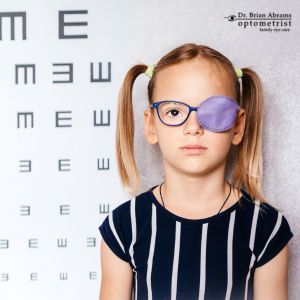Ambylopia, which is colloquially referred to as a “lazy eye,” is a condition where vision does not effectively develop in a child’s early years, leading to reduced vision or blurry vision. This condition usually affects just one eye and starts to develop in the first 7 years of life. If detected early and assessed by a trusted pediatric optometrist or an eye doctor in Vaughan experienced with kids’ eye exams, you can potentially reverse or reduce the effects of a lazy eye for stronger vision development. To ensure your child’s eyes are developing as expected, book a kid’s eye exam with Dr. Brian Abrams, a local and trusted eye doctor in Vaughan.
What Are the Signs of a Lazy Eye in Young Children
Signs of a lazy eye can range but typically centre around indications that your child is having trouble seeing or focusing their vision. If you notice that your child is squinting, tilting their head, or closing one eye to see more clearly, it’s a good idea to schedule a kid’s eye exam. Even if it is not a lazy eye, it could be myopia or another vision problem that is best addressed by an eye doctor in Vaughan. Other signs of a lazy eye you may notice in your child is a lack of depth perception, which can be identified by clumsiness, trouble with hand-eye coordination, and difficulty playing sports or with academic performance. Visually, you may also notice that your child’s eyes are not working together as you would expect when both eyes are developing together at the same pace.

If you notice any of the above signs, contact a pediatric eye doctor or Dr. Brian Abrams to book an eye exam near you.
Some Treatments for a Lazy Eye
In most cases, when a lazy eye is identified by an experienced pediatric optometrist or eye doctor in Vaughan, treatment involves strengthening the vision in the weaker eye. Some options include:
- Eye Patching: This involves placing a patch over the stronger eye. This forces the weaker eye to work harder, encouraging proper visual development and helping the brain to reconnect with the eye. The amount of time your child will have to wear the eye patch daily will depend on guidance from your eye doctor, but it is typically required to be at least a few hours every day.
- Eye Drops/Medications: Similar to eye patching, Atropine eye drops may be used in the stronger eye to temporarily blur vision, making the weaker eye or the “lazy eye” responsible for vision. This option is helpful for children who struggle to maintain the eye patch or keep it on due to discomfort
- Glasses: Corrective eyewear and prescription lenses may be recommended to address refractive errors such as farsightedness, nearsightedness, or astigmatism that may be contributing to amblyopia. Glasses can improve overall visual clarity and, in some mild cases, maybe the only treatment needed to correct the condition.
- Vision Therapy: This is a personalized, in-office or at-home program involving eye exercises that help improve the coordination and focus of both eyes. These exercises are designed to retrain the brain and eyes to work together more effectively. When done consistently under professional guidance, vision therapy can significantly enhance visual function.
- Surgery: In rare cases where amblyopia is caused by an underlying structural issue like cataracts or misaligned eyes (strabismus), surgery may be recommended to correct the physical problem. This is typically followed by other therapies to strengthen vision in the affected eye.
What is the Outlook for Children with a Lazy Eye
Finding out your child has a lazy eye can be understandably overwhelming, but lazy eyes can be corrected or improved with the right care and childhood intervention. When addressed in the formative years of vision development and monitored with regular kids’ eye exams, reversing a lazy eye has a much higher chance of being successful. However, if discovered later in life, there are treatments available to teens and adults that can, at minimum, make improvements to their vision.
Support Health Vision Development for Your Child with Dr. Brian Abrams
It’s easy for parents to get overwhelmed by potential health issues that can arise in childhood. The best and most manageable way to stay on top of your child’s vision development and eye health is with regular visits to your eye doctor in Vaughan. The early years of a child’s life are when vision is least stable. Dr. Brian Abrams, a trusted and reputable optometrist in Vaughan, and our team are here to help you support your child in achieving a healthy and bright future.
Get started with a kid’s eye exam.


